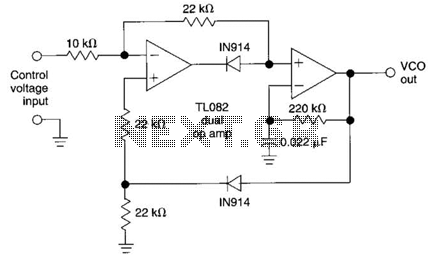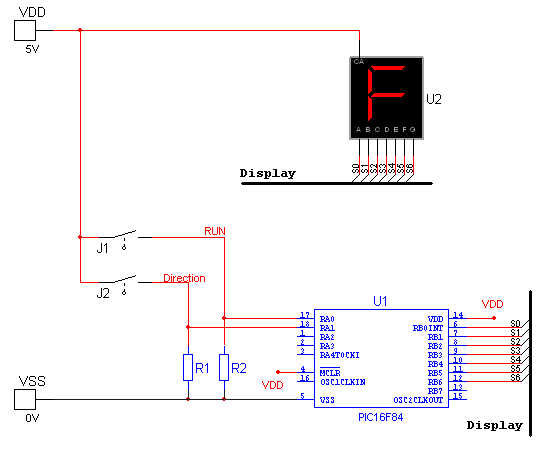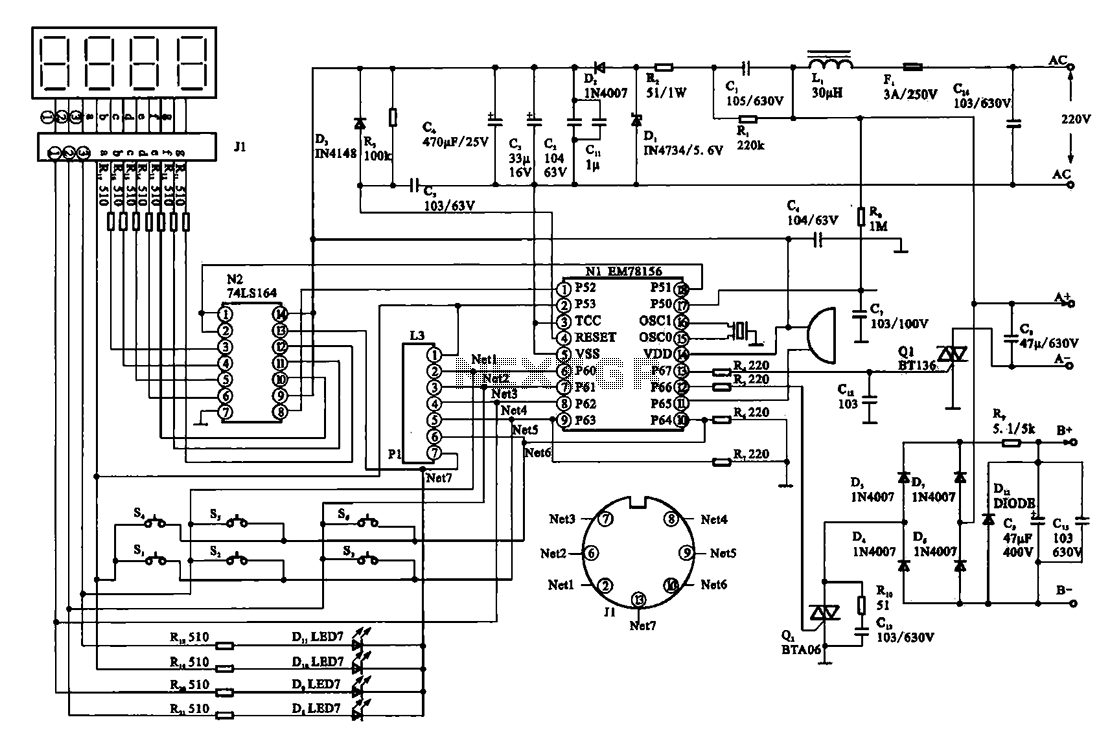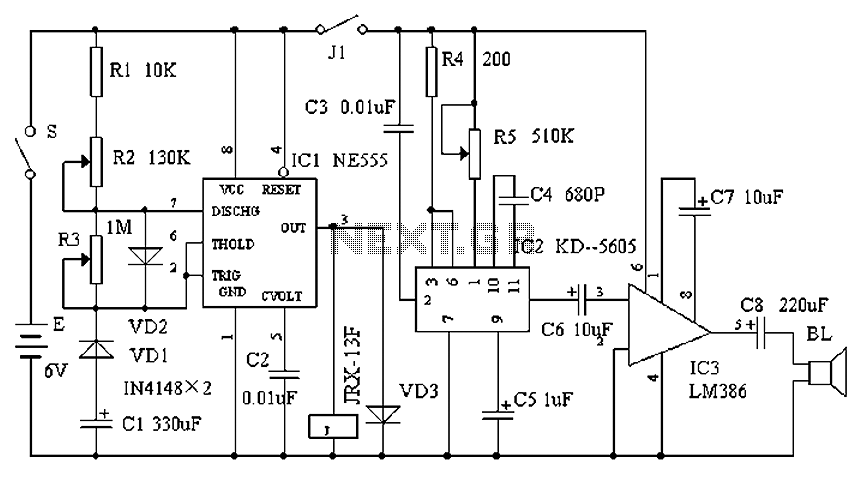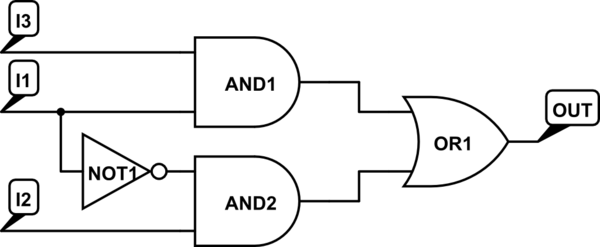
Auto-Arming Car Alarm circuit
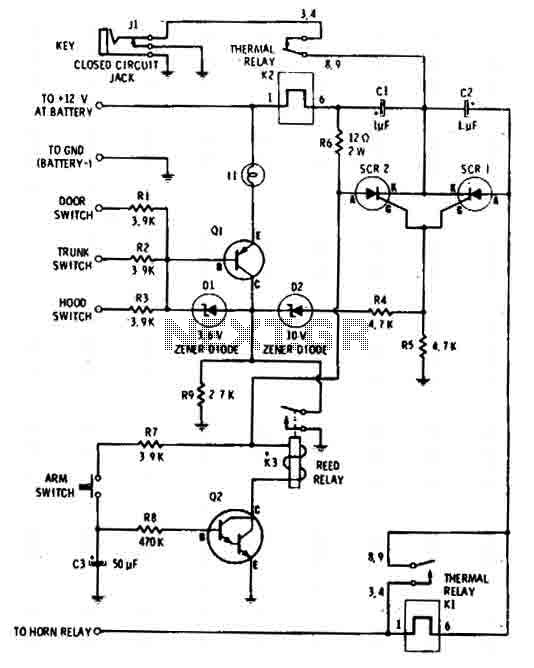
The car alarm is a straightforward circuit with fundamental features that monitor all entry points of the vehicle, such as doors, using switches. It operates with a single switch (the arm switch) that allows the circuit to remain inactive until the sensor switches are triggered. When the sensor switches open, the circuit activates, causing the horn to emit one-second pulses immediately, providing the driver with an opportunity to enter the vehicle and deactivate the arming switch. Once the sensor switches close again, the alarm will automatically rearm. The circuit design is uncomplicated and utilizes only transistors.
The car alarm circuit is designed to provide security for vehicles by monitoring access points through switches placed on doors and other entry areas. The core of the circuit relies on transistors, which function as electronic switches, allowing for a compact and efficient design.
The operation begins when the arm switch is engaged, which activates the circuit and prepares it to monitor the sensor switches. These sensor switches are typically placed on the doors; when a door is opened, the corresponding sensor switch is triggered, causing the circuit to activate. In response, the horn is signaled to produce a series of one-second pulses. This audible alert serves as a warning and also gives the driver a brief window to enter the vehicle and deactivate the system.
Once the driver has entered the car and turned off the arm switch, the transistors within the circuit reset the system. If the sensor switches close again (for example, if all doors are shut), the alarm system automatically re-arms itself, ensuring continuous protection. This self-arming feature is particularly advantageous as it requires no manual reset, thus enhancing user convenience.
The simplicity of the circuit, relying solely on transistors, contributes to its reliability and ease of maintenance. The design minimizes the need for complex components, which can often introduce points of failure. Instead, the use of transistors allows for a robust solution that can effectively safeguard the vehicle against unauthorized access while remaining user-friendly. Overall, this car alarm circuit exemplifies an efficient approach to vehicle security, balancing simplicity with functionality.The car alarm here is a simple circuit with basic characteristics that cover all entrances at the car that has switches (doors etc).With one switch (arm-switch) the circuit waits for the sensor-switches to open and to activate it. So the horn with 1 sec pulses will sound imediatelly seconds so the driver can enter in car and disactivate the arming switch.
As the sensor-swithes are closed again the alarm will be armed again automaticaly. The circuit is very simple and uses only transistors. 🔗 External reference
The car alarm circuit is designed to provide security for vehicles by monitoring access points through switches placed on doors and other entry areas. The core of the circuit relies on transistors, which function as electronic switches, allowing for a compact and efficient design.
The operation begins when the arm switch is engaged, which activates the circuit and prepares it to monitor the sensor switches. These sensor switches are typically placed on the doors; when a door is opened, the corresponding sensor switch is triggered, causing the circuit to activate. In response, the horn is signaled to produce a series of one-second pulses. This audible alert serves as a warning and also gives the driver a brief window to enter the vehicle and deactivate the system.
Once the driver has entered the car and turned off the arm switch, the transistors within the circuit reset the system. If the sensor switches close again (for example, if all doors are shut), the alarm system automatically re-arms itself, ensuring continuous protection. This self-arming feature is particularly advantageous as it requires no manual reset, thus enhancing user convenience.
The simplicity of the circuit, relying solely on transistors, contributes to its reliability and ease of maintenance. The design minimizes the need for complex components, which can often introduce points of failure. Instead, the use of transistors allows for a robust solution that can effectively safeguard the vehicle against unauthorized access while remaining user-friendly. Overall, this car alarm circuit exemplifies an efficient approach to vehicle security, balancing simplicity with functionality.The car alarm here is a simple circuit with basic characteristics that cover all entrances at the car that has switches (doors etc).With one switch (arm-switch) the circuit waits for the sensor-switches to open and to activate it. So the horn with 1 sec pulses will sound imediatelly seconds so the driver can enter in car and disactivate the arming switch.
As the sensor-swithes are closed again the alarm will be armed again automaticaly. The circuit is very simple and uses only transistors. 🔗 External reference
Warning: include(partials/cookie-banner.php): Failed to open stream: Permission denied in /var/www/html/nextgr/view-circuit.php on line 713
Warning: include(): Failed opening 'partials/cookie-banner.php' for inclusion (include_path='.:/usr/share/php') in /var/www/html/nextgr/view-circuit.php on line 713
